[A] : Ascomycetes and basidiomycetes are septate fungi .
[R] : The hyphae are divided by few or many partitions or cross walls .
If both A and R are true and R is the correct explanation of A
If both A and R are true but R is not the correct explanation of A
If A is true and R is false
If both A and R are false
Step by step video & image solution for [A] : Ascomycetes and basidiomycetes are septate fungi . [R] : The hyphae are divided by few or many partitions or cross walls . by Biology experts to help you in doubts & scoring excellent marks in Class 12 exams.
Updated on:21/07/2023Topper's Solved these Questions
Similar Questions
Read the passage and answer the questions that follow:
Simple tissues are also known as ground tissues. They include the tissues known as parenchyma, collenchyma, and sclerenchyma. The parenchyma tissue is composed of parenchyma cells, which are found throughout the plant. They are particularly abundant in the stems and roots. The leaf cells that carry out photosynthesis are also parenchyma cells. Unlike many other plant cells, parenchyma cells are alive at maturity and retain the ability to divide. They perform many functions. Some are special ised for photosynthesis, some for storage, and oth ers for secretion and transport.
Like parenchyma cells, collenchyma cells are alive at maturity. They differ from parenchyma cells in that they have thick cell walls. The col lenchyma tissue is most often found in the form of strands or cylinders of cells in stems and leaves. The thick cell walls of collenchyma cells provide support to these plant structures. The strands of tissues in celery are collenchyma tissues. Even collenchyma cells retain the ability to divide. Sclerenchyma consists of thick-walled dead cells. It possesses extremely thick secondary walls due to uniform deposition of lignin. It provides mechanical strength. The cells may occur singly or in groups and may be long and fibrous or stony.Stone cells (sclereids) are found in seed coats and some fruits (e.g, pear).
Which type of tissue is responsible for the hardness of the coconut shell?
View SolutionIn Fig., a container is shown to have a movable (without friction) piston on top. The container and the piston are all made of perfectly insulating material allowing no heat transfer between outside and inside the container. The container is divided into two compartments by a rigid partition made of a thermally conducting material that allows slow transfer of heat. the lower compartment of the container is filled with 2 moles of an ideal monoatomic gas at 700 K and the upper compartment is filled with 2 moles of an ideal diatomic gas at 400 K. the heat capacities per mole of an ideal monoatomic gas are Cυ=32RandCP=52R, and those for an ideal diatomic gas are Cυe=52RandCP=72R.
Now consider the partition to be free to move without friction so that the pressure of gases in both compartments is the same. the total work done by the gases till the time they achieve equilibrium will be
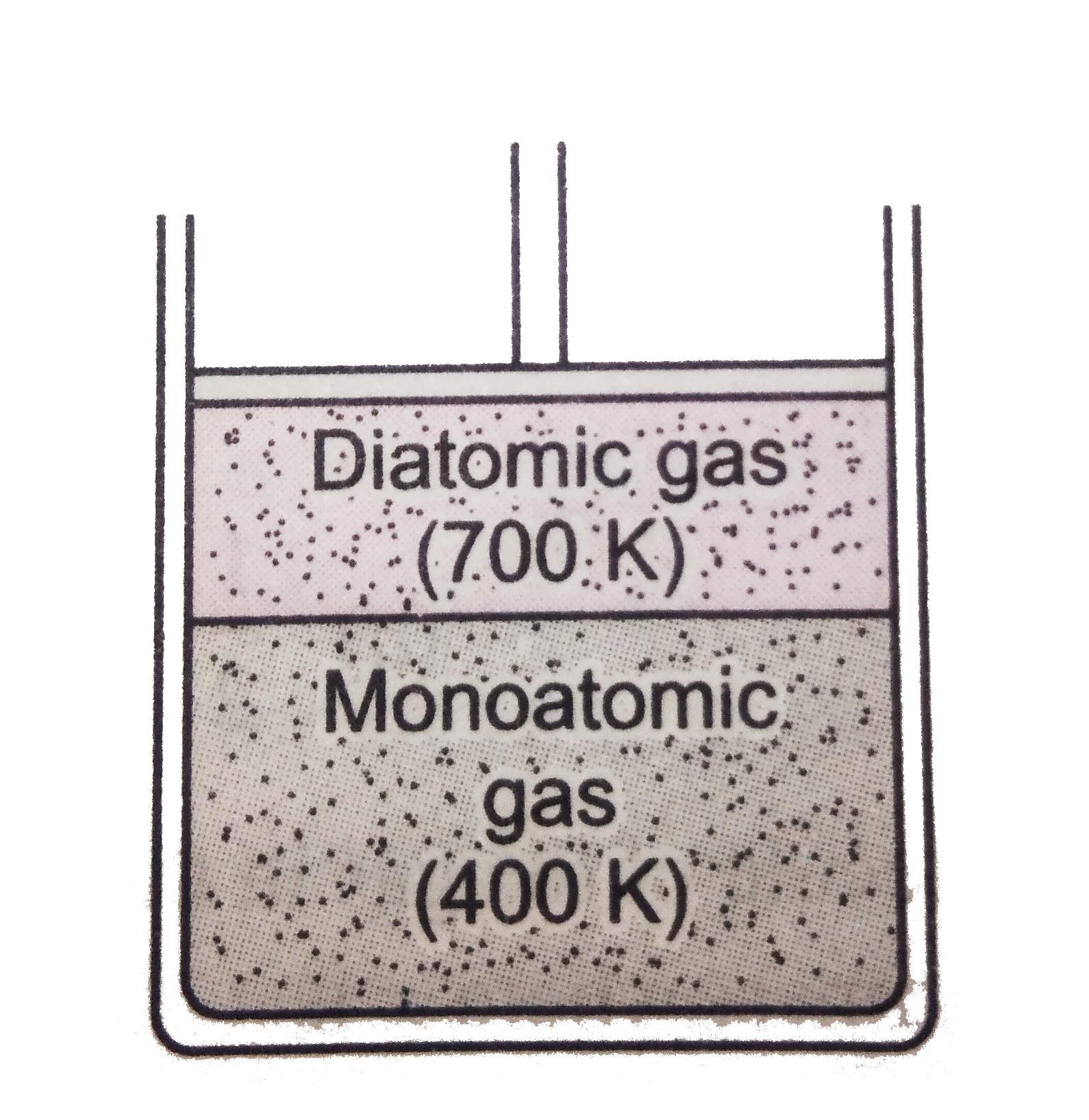
View Solution
Knowledge Check
Which of the following statements are correct regarding Deuteromycetes?
I. Deuteromycetes are called perfect fungi.
II. Members of Deutermycetes mycetes were often moved to ascomycetes or basidiomycetes once their sexual stages were studied.
III. Large number of (No Suggestions) are decomposers that help in nutrient cycling.
IV. Their mycelium is aseptate and unbranched.AI , II and IVBII and IIICIII and IVDI , III and IVA container with rigid walls is covered with perfectly insulating material. The container is divided into two parts by a partition. One part contains a gas while the other is fully evacuated (vacuum). The partition is suddenly removed. The gas rushes to fill the entire volume and comes to equilibrium after a little time. If the gas is not ideal,
Athe initial internal energy of the gas equals its final internal energyBthe initial temperature of the gas equals its final temperatureCthe initial pressure of the gas equals its final pressureDthe initial entropy of the gas equals its final entropyUnlike true fungi cell wall of hyphae cells are made up of cellulose in
AoomycetesBzygomycetesCascomycetesDchytridiomycetes
In Fig., a container is shown to have a movable (without friction) piston on top. The container and the piston are all made of perfectly insulating material allowing no heat transfer between outside and inside the container. The container is divided into two compartments by a rigid partition made of a thermally conducting material that allows slow transfer of heat. the lower compartment of the container is filled with 2 moles of an ideal monoatomic gas at 700 K and the upper compartment is filled with 2 moles of an ideal diatomic gas at 400 K. the heat capacities per mole of an ideal monoatomic gas are Cυ=32RandCP=52R, and those for an ideal diatomic gas are Cυe=52RandCP=72R.
Consider the partition to be rigidly fixed so that it does not move. when equilibrium is achieved, the final temperature of the gases will be
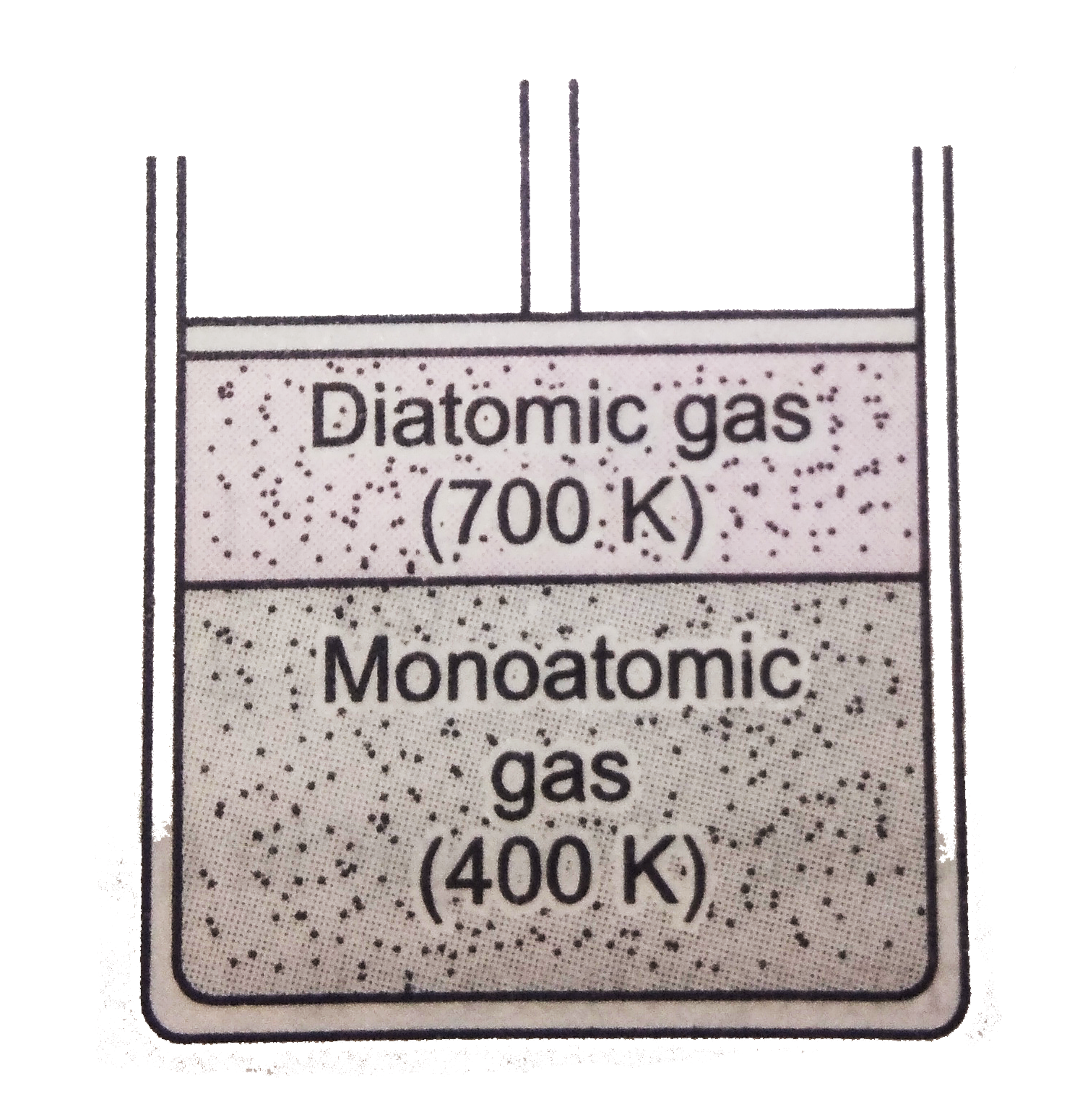
View SolutionIn the figure, a container is shown to have a movable (without friction) piston on top. The container and the piston are all made of perfectly insulated material allowing no heat transfer between outside and inside the container. The container is divided into two compartments by a rigid partition made of a thermally conducting material that allows slow transfer of heat. The lower compartment of the container is filled with 2 moles of an ideal monatomic gas at 700K and the upper compartment is filled with 2 moles of an ideal diatmoic gas at 400K. The heat capacities per mole of an ideal monatomic gas are CV=32R,CP=52R, and those for an ideal diatomic gas are CV=52R,CP=72R,
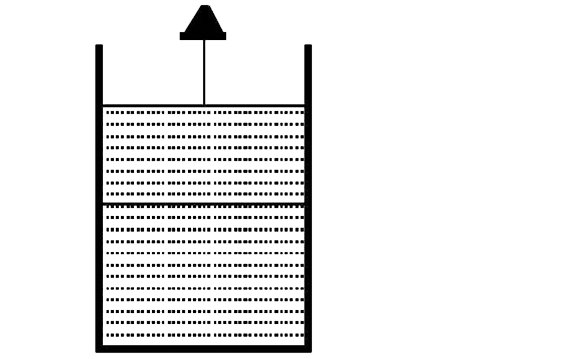
Consider the partition to be rigidly fixed so that it does not move. When equilibrium is achieved, the final temperature of the gasses will be
View SolutionIn the figure, a container is shown to have a movable (without friction) piston on top. The container and the piston are all made of perfectly insulated material allowing no heat transfer between outside and inside the container. The container is divided into two compartments by a rigid partition made of a thermally conducting material that allows slow transfer of heat. The lower compartment of the container is filled with 2 moles of an ideal monatomic gas at 700K and the upper compartment is filled with 2 moles of an ideal diatmoic gas at 400K. The heat capacities per mole of an ideal monatomic gas are CV=32R,CP=52R, and those for an ideal diatomic gas are CV=52R,CP=72R,
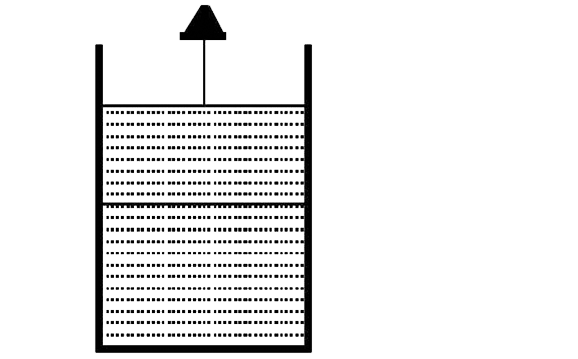
Now consider the partition to be free to move without friction so that the pressure of gasses in both compartments is the same. The total work done by the gases till the time they achives equilibrium will be
View SolutionA partition divides a container having insulated walls into two compartments whose initial paraments are given. The partition is a conducting wall which can move freely without friction. Which of the following statements is/are correct, with refrence to the final equilibrium position ?
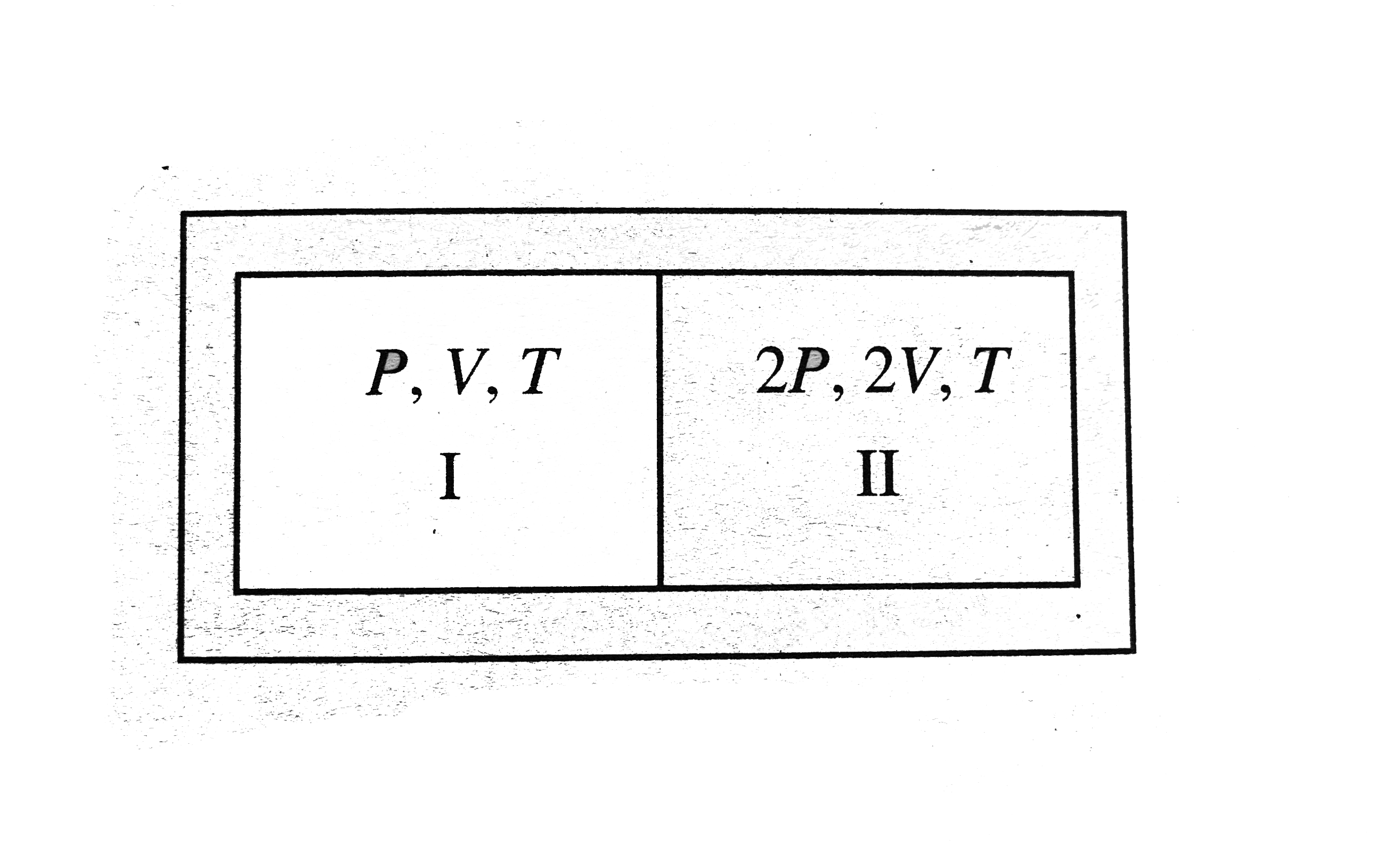
View SolutionGiven below are two statements and select the correct answer from the codes given below–
Assertion (A): The society during Satavahana period was divided into four castes on the basis of profession.
Reason (R): They wanted a progressive society free from many narrow attitudes.
In the context of above two statements, which one of the following is correct?
View Solution
